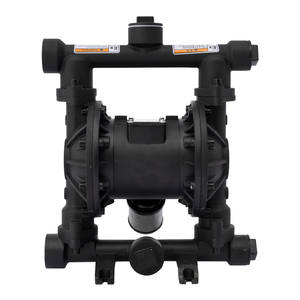
All categories
Featured selections
Trade Assurance
Buyer Central
Help Center
Get the app
Become a supplier

(9056 products available)



















An oil water centrifugal separator machine or an oil-water separator is designed to separate lubricant, crude, or any other oil from water. Different industries use it to avoid environmental pollution. The oil water centrifugal machines may differ in design, specifications, and functional features.
Gravity separator:
The most common type of separator used in the industry. It typically consists of a corrugated plate packing assembly. The assembly lets the oil droplets rise through the water column. The oil then collects at the top of the tray, and the oil weir directs it to the collection container. The predominantly oily influents in the gravity separator may flow through the underflow.
Centrifugal separator:
It consists of a compact cylindrical bowl. The bowl rotates at approximately 3000-6000 RPMs. The rotational force creates a high G-Force that separates the different liquid components. In some cases, special chemicals may be needed to carry out the separation process.
Hydrocyclone separator:
It is a special type of separator that functions like a gravity separator, without any moving parts. The hydrocyclone uses high water pressure to create a vortex that separates the oil from the water. Although it is economical and energy efficient, the hydrocyclone works well only if the oil-water mixture has a high percentage of suspended solids.
Coalescing/filter separator:
This separator consists of a high-flow micro-filter. It extracts fine oil droplets from water by passing water through its pore structure. The filter is cleaned regularly so that the water-pore blockage does not affect the oil droplet extraction.
Plate separator:
Also known as an inclined plane separator. It separates oil from water as the two fluids flow in opposite directions over inclined plates. Gravity then pulls the oil on top of the water. The oil weir then directs the oil to a collection container.
An oil water centrifuge machine can be used in various industries and applications. Here are some ways in which an oil and water separator centrifuge is currently being used:
Ability to segregate:
Identifying the separation capacity of an oil water separator centrifuge machine is critical. Some centrifuges can disband three fluids (i.e. liquid-liquid-solid) or inter-phase emulsions, while others are designed for simple oil-water separation.
Quality of material:
The separator machine's construction material must resist corrosion to ensure a long lifespan. Since the centrifuge works with diverse forms of chemicals, the construction material must function well under certain temperature limits and chemical interaction.
Feed rate:
Understanding the feed rate (flow rate) of the centrifuge helps match it to the intended application. A high feed rate is usually desired in industrial-scale operations, while lower rates may be adequate for smaller, more contained applications.
Degree of separation:
Centrifuges for oil-water separation serve different purposes based on the level of purity or separation required. Some achieve basic oil recovery, while others provide high-quality treatment to meet stringent disposal or reuse standards.
Choosing the correct centrifugal oil separator machine for a business may be challenging because there are several things to consider. However, understanding key qualities of the separator should make the buying process easier and more straightforward.
Cylinder capacity:
A separator machine with a larger bowl or cylinder has a greater capacity, allowing it to handle larger volumes of emulsified liquids in a single cycle. This helps improve processing speed and efficiency. Furthermore, having a larger cylinder means less frequent interruptions to refill or recharge the separator, thus increasing operational continuity and productivity.
Frequency of use:
A high-capacity centrifuge can better meet the demands of frequent separation processes. It possesses the endurance and capability to handle constant workloads. Separating oil from water consistently or processing large quantities of emulsified liquids in high-production industries necessitates sustained performance.
Maintenance cost:
When considering the longevity and constant performance of a centrifuge machine, the maintenance cost must be accounted for. Choosing a separator with a large cylinder can help reduce maintenance costs. The capacity to handle higher volumes reduces the risk of overloading the machine.
These are some factors to consider when choosing an oil water centrifuge machine. Some additional tips include researching reputable manufacturers to buy from and assessing space limitations before buying a separator machine.
Q1: What is the difference between a horizontal and a vertical centrifuge separator?
A1: The main difference between horizontal and vertical centrifuge separators is the configuration of the rotating bowl. A horizontal centrifuge separator has a vertically positioned bowl that rotates around its axis, while a vertical centrifuge separator has a bowl that is horizontally placed or laid perpendicular to the feed direction.
Q2: What are the benefits of using an oil-water centrifuge separator?
A2: Oil-water centrifuge separators offer several benefits, such as the ability to handle high flow rates, flexibility to process different oil-water ratios, compact design, low operating cost, and high separation efficiency. They also feature automatic self-cleaning systems, which reduce maintenance requirements and are environmentally friendly solutions for oil-water separation.
Q3: What are the limitations of oil-water centrifugal separators?
A3: The efficiency of oil-water centrifuge separators may be affected by the temperature and viscosity of the influent stream. Adjustments may be necessary when separating liquids with high viscosity to maintain optimal performance. Additionally, the initial cost of centrifuge separators is typically higher than that of gravity separators.